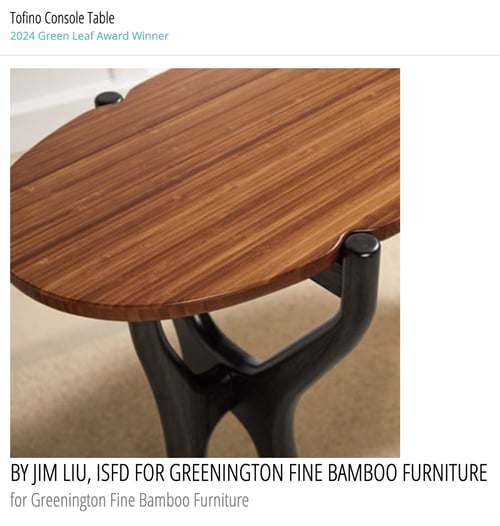What We Do
Initiatives / Programs
Wood Furniture Scorecard
The Wood Furniture Scorecard is an assessment tool that evaluates and ranks retail companies based on their wood sourcing policies and implementation of the policies. It focuses on wood furniture, which is a significant material and component of the home furnishings industry. Here's how the scorecard helps companies with their sustainability initiatives.
•
Encouraging Responsible Sourcing
The Scorecard encourages companies to source wood materials responsibly. It assesses whether companies use sustainably harvested or reclaimed wood, which helps protect forests and biodiversity.
•
Transparency
By publicly ranking companies based on their responsible wood sourcing and reporting publicly, the Scorecard promotes transparency. This transparency motivates companies to improve their practices and helps consumers make informed choices.
•
Consumer Confidence
When companies receive high scores on the Scorecard, it boosts consumer confidence in their products. Consumers are more likely to support companies that prioritize sustainable responsible wood sourcing.
•
Benchmarking & Continuous Improvement
The Scorecard provides yearly benchmarks for companies to measure their performance against industry peers. This encourages healthy competition and motivates companies to continually improve their sourcing, working with their furniture or wood suppliers.
•
Market Access
Companies with higher scores on the Scorecard may gain easier access to markets and consumers that prioritize sustainability. This can lead to increased sales and market share.
The Green Leaf Award
The Sustainable Furnishings Council judges The Green Leaf Award, a subcategory of the ISFD Pinnacle Awards that recognizes products that meet high design standards and are also eco-friendly. This award is presented annually by the SFC Leadership Team at The Pinnacle Awards Gala held during the fall High Point Furniture Market.

The Green Award
In 2010, ART (Accessories Resource Team) partnered with the Sustainable Furnishings Council to create the ART Green Award for manufacturers. ART acknowledges the importance of the Best Practices and Standards for Sustainability established by the Sustainable Furnishings Council, which contribute to a company's overall well-being and support a healthier future for all.
Sustaining a healthy future requires addressing the "triple bottom line" of sustainability: protecting ecosystems, supporting communities, and maintaining profits.
ART Green Award finalists are evaluated based on their sustainable practices. Evidence is gathered from the application, publicly available information (such as the company’s website), and self-reported details provided by the company, including supporting comments and evidence. The ARTS Awards is the premier international awards program dedicated to the home industry. Up to 28 categories exist under the headings Manufacturer, Retailer, Product Designer, Interior Designer, Sales Representative, Green Award, and other specialty honors.
The Green Award is presented by the Sustainable Furnishings Council at the ART Awards Gala in Dallas, Texas each January.

